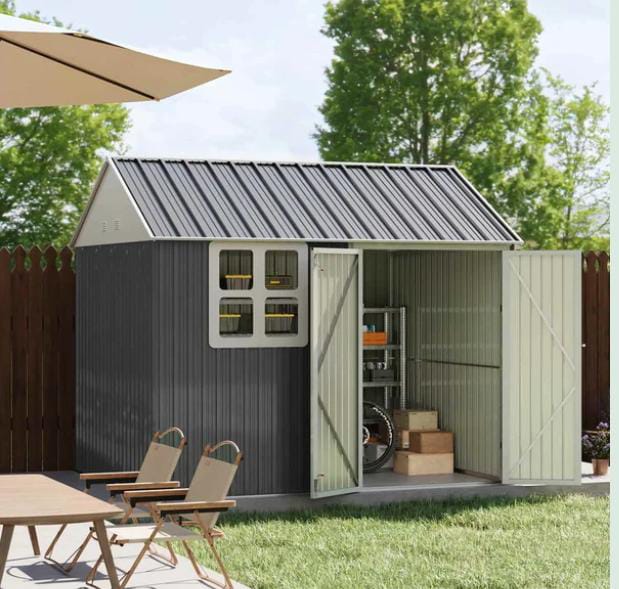Adding a storage shed to your property is a smart way to declutter your garage, protect your gardening tools, and organize seasonal equipment. However, before you pick up that hammer or order a 10×8 shed, there’s an important question you need to answer: how close to the property line can you put a storage shed? Knowing the legal, practical, and safety requirements ahead of time can save you from fines, disputes, or even needing to tear the shed down.
Why Setbacks Matter: Understanding Property Line Rules
Property lines determine the legal boundary between your land and your neighbor’s. Most cities or counties have zoning ordinances requiring “setbacks,” which are minimum distances a structure must be from the property line. These rules protect privacy, prevent overcrowding, and allow for maintenance access and emergency response.
Typical shed setback requirements include:
Side Yard: 3–5 feet
Rear Yard: 5–15 feet
Front Yard: Rarely allowed without a special permit
Always check with your local building department before beginning your project.
HOA and Local Regulations
If you live in a community governed by a Homeowners Association (HOA), its restrictions may be stricter than municipal codes. They might require:
- Specific shed colors or materials
- Height limits
- Landscaping buffers
So even if your city allows a shed 3 feet from the line, your HOA might demand 10 feet. Make sure to get written approval to avoid future issues.
Practical Considerations Before You Build
Beyond legal limits, think about:
Roof drainage: Will water run off into your neighbor’s yard?
Access: Do you have space to maneuver large tools or lawnmowers?
Future maintenance: Leave enough space to repaint or repair the shed’s exterior.
Ventilation & light: Avoid placing the shed too close to walls or fences where it blocks sunlight or airflow.
Choosing the right size is key. A 10×8 shed is one of the most popular sizes, offering ample storage without overwhelming smaller backyards.
Metal Sheds: Durable and Space-Saving
If you’re dealing with limited space, outdoor storage sheds metal are a great option. They typically have thinner walls than wood, offering more interior space without expanding the exterior footprint. Metal sheds are also:
- Weather-resistant
- Pest-proof
- Low maintenance
They’re an excellent solution when your setback space is limited, but you still need maximum storage.
What If You Ignore the Rules?
Placing your shed too close to the property line can result in:
- Complaints or legal action from neighbors
- City citations or fines
- Forced removal of the structure
In worst-case scenarios, you might have to dismantle and relocate your shed — a costly and frustrating outcome. That’s why it’s always better to plan correctly the first time.
Steps to Stay Compliant
Here’s a simple checklist to follow:
- Measure your property lines with a surveyor or property deed.
- Check local zoning codes and HOA guidelines.
- Apply for a permit if required.
Choose the right shed size (like a versatile 10×8 shed) and material (consider outdoor storage sheds metal for long-term durability). Maintain setbacks and document compliance in case questions arise later.
Conclusion
Installing a shed adds value and functionality to your property—but only if done right. Understanding how close to the property line you can build a storage shed protects your investment and keeps neighborhood relationships smooth. With careful planning and the right product choice, such as a sleek outdoor storage shed’s metal design or a roomy 10×8 shed, your backyard will be both organized and regulation-compliant.

